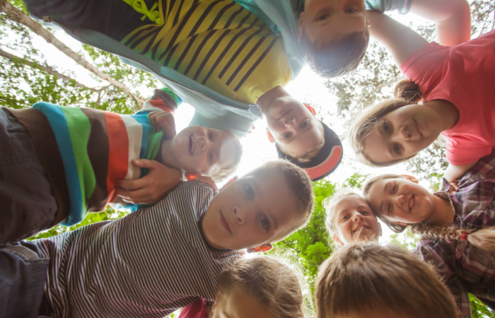
Lice inspection: FYI Using a louse comb is four times more efficient than direct visual examination and twice as fast.
HeadLice.orgFor many kids, day- and sleepaway camp is the highlight of summer vacation. It’s also an ideal environment for head lice to spread.
According to the Centers for Disease Control and Prevention, between 6 million and 12 million children get head lice every year. The good news is that beyond their bites making the scalp itchy, which can lead to scratching and the potential for infection, lice do not pose a serious health risk. The bad news, as anyone who's ever been treated for or treated others for head lice knows, is that getting rid of them can be challenging.
The best approach to lice management is prevention. If your kids are headed off to camp, sleepovers, or vacation getaways with others, make sure they understand what lice are and how they spread.
Key things to share about head lice include:
They mainly spread by direct contact with the hair of a person infested with lice.
They move by crawling; they cannot hop or fly.
They are frequently spread by:
- sharing clothing, hats, scarves, coats, or hair accessories worn by an infested person
- using infested combs, brushes, or towels
- lying on a bed, couch, pillow, carpet, or stuffed animal that has recently been used by an infested person
To prevent the spread of lice, encourage your child to:
Avoid sharing personal items, including hats, clothes, hairbrushes, hair ties, or hairbands.
Avoid lounging in the personal space of others, especially on beds, pillows, and stuffed animals.
If they have long hair, keep it in tight braids, buns, or ponytails to reduce the risk of hair-to-hair contact.
If your child is open to it, cut hair short before camp to lower the risk of contact.
If your child’s day camp reports a head lice infestation, inspect their head immediately. Here’s how:
- Have your child sit in a chair in a well-lit area.
- Part hair into small sections and examine the scalp, focusing on:
- The crown of the head.
- Behind the ears.
- Nape of the neck.
- Bangs area.
- Look for sesame seed-sized lice moving quickly along their scalp or hair shaft.
- Inspect the shaft of their hair near the scalp for eggs, also called nits. The oval, white or slightly tan nits will be firmly attached about ¼” from the scalp.
- Even if you don’t see lice or nits, use a fine-toothed comb to comb small sections of hair, working from scalp to ends. After each pass, wipe the comb on a white tissue and inspect for lice or nits.
If you find head lice or nits, you have several treatment options.
Wet combing
Using a special fine-toothed comb called a lice comb (available online and at most pharmacies) follow these steps to remove head lice and nits.
- wash hair with ordinary shampoo
- apply twice the normal amount of standard hair conditioner and leave in
- run the lice comb through the whole head of hair, working from the roots to the ends
- wipe the comb on a white tissue between each pass
- keep combing until you no longer find lice or nits, then rinse hair with water.
If your child can’t tolerate this process—it can be lengthy—or it does not successfully resolve the issue, you need to take things to the next level.
Medicated lotions and sprays
Available at grocery stores, pharmacies, and online, medicated lotions and sprays kill head lice. Most products kill lice within a day. Application and treatment methods vary between products. Be sure to follow the package directions, noting if a repeated application is required.
DO NOT use the same lice treatment more than recommended and avoid using multiple treatments simultaneously.
If medicated products do not work, speak to your child’s doctor about prescription treatment options.
In addition to addressing any potential head lice and nits in your child’s hair, you also need to treat your home and car.
HOME
- Wash hats, pillowcases, and clothing worn in the previous two days in hot water and dry on high heat.
- Items that can’t be washed, including stuffed animals, should be sealed in a plastic bag for two weeks.
CAR
- Vacuum seats and car seats thoroughly. Note, leather seats need only be wiped down with a damp cloth to remove head lice.
- Remove car seat covers and run them through the dryer on high heat for 40 minutes.
Jaclyn Dy Lozier, MD, FAAP, is the Chair of Pediatrics at Southwestern Vermont Medical Center and the Medical Director, SVMC Pediatrics.